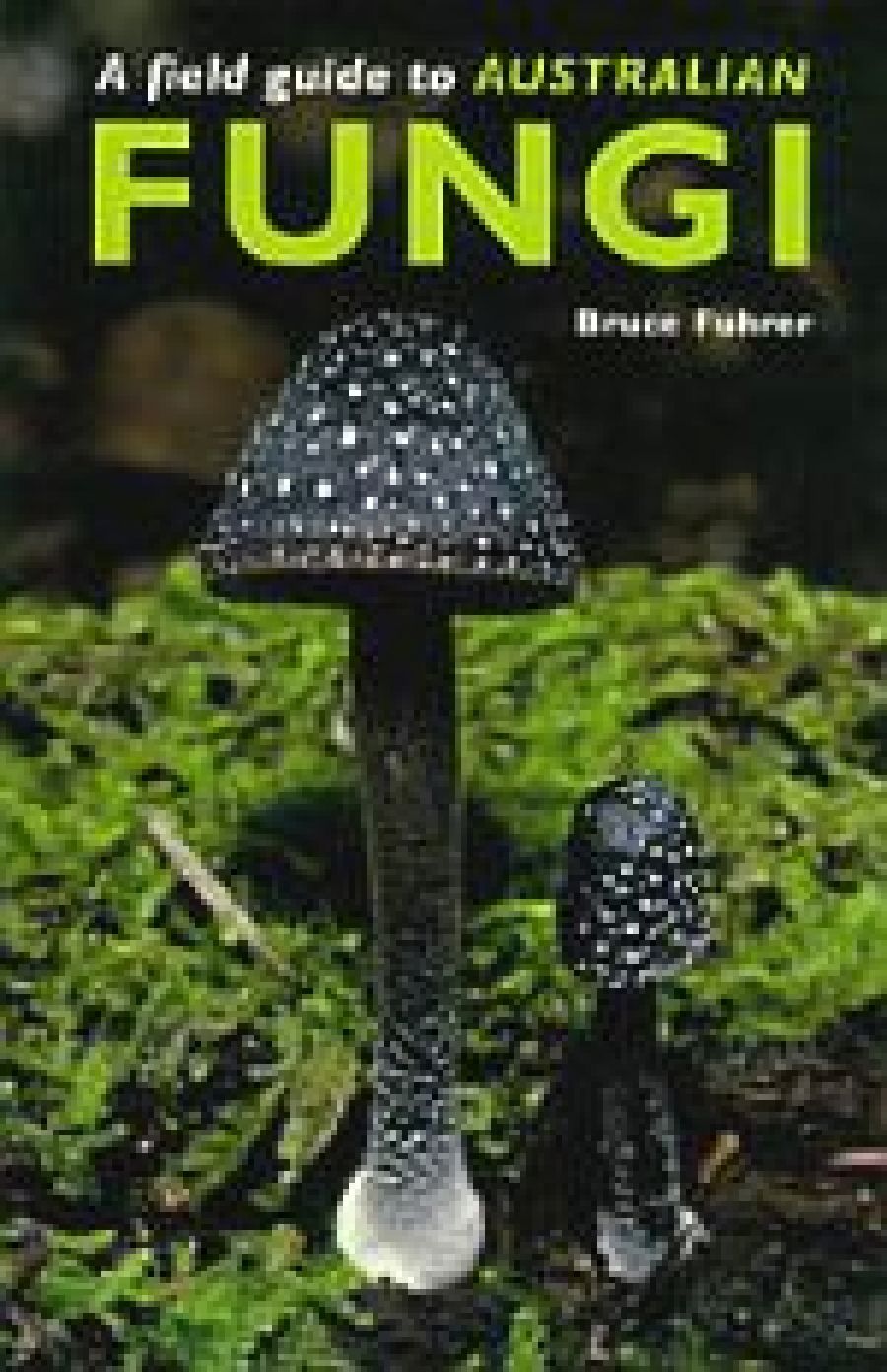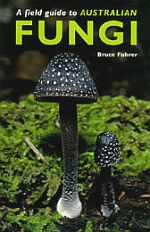
- Free Article: No
- Contents Category: Nature Writing
- Review Article: Yes
- Article Title: Cornucopia of fungi
- Online Only: No
- Custom Highlight Text:
After rain at cooler times of the year, the bush is full of fungi. Fruit-bodies of mushrooms, truffles, puffballs, morels, slime moulds and other larger fungi spring forth in a great variety of shapes and colours. For select Australian fauna and flora, such as birds, reptiles or orchids, there are comprehensive and richly illustrated field guides, which have sufficient text to assist the user in putting names to species encountered. However, existing guides to Australian fungi cover a rather limited number of species, or lack text. Putting names to the multitude of fungi is therefore rather difficult.
- Book 1 Title: A Field Guide to Australian Fungus
- Book 1 Biblio: Bloomings Books, $49.95 pb, 360 pp, 1876473517
- Book 1 Cover Small (400 x 600):

- Book 1 Cover (800 x 1200):

The illustrations are reproduced at a good size, but the layout is rather haphazard. The introduction states that ‘due to design challenges’ some captions are overleaf from pictures. In addition, captions are sometimes below or above pictures, or on facing pages. Confusion in the position of captions has even led to the fabulous cover image of Mycena nargan being mislabelled as Mycena nivalis. Arrows from each caption to the position of the relevant illustration would have been of assistance.
How does A Field Guide to Australian Fungi serve as a field guide? In comparison to other Australian fungi guides, the jump from the hundred or so species generally covered is a boon. However, the diversity of species, often only subtly different, requires text that guides the reader through the bewildering variety. The concise captions unfortunately often omit or fail to highlight features that aid identification. This is a shame, since Fuhrer depicts his subjects to best effect, with diagnostic characters necessary for field identification usually clearly visible (such as the annulus on the stipe of Rozites metallica). In the rather terse captions, there are occasional evocative asides, such as the comparison of Lanzia lanaripes to ‘broad-headed nails protruding from ... rotting logs’. More such pithy characterisations of the illustrated fungi would have been useful.
There is a helpful pictorial guide to broad groups of different overall appearance: such as truffles, puffballs, and jelly fungi. The pragmatic arrangement of images under such artificial groups generally works well (although the spined Beenakia is out of place among the coral fungi). However, once in a group, there is rarely an indication of the key characters of each genus belonging to the group (and no mention of how many of the known species of each genus are included).
In a field guide, one would also expect information on the distribution of each species, but this is generally lacking. Other recent books of lesser scope do provide detail of distribution: Fungi Down Under: The Fungimap Guide to Australian Fungi (2005) has maps; A Field Guide to the Fungi of Australia (2005) lists distribution by states.
With very few exceptions, names are correct and as up to date as possible in the rather rapidly changing world of fungal classification. The author only rarely indicates edibility or otherwise. This will disappoint readers whose mycological interest is mainly culinary, but truly reflects the almost total lack of knowledge of toxicity for native Australian fungi.
This book is more of a compendium (or indeed a cornucopia) of fungi. It will be essential for fungi enthusiasts, but those coming to fungi for the first time will need some patience in unlocking the secrets that the photographs contain. Fuhrer’s fabulous images also deserve to be perused by anyone with an interest in the wonderful architecture and design to be found in the natural world.


Comments powered by CComment